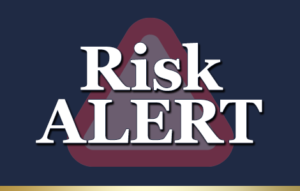New research by First Street Foundation finds that 25 percent of critical infrastructure is at risk of flooding today—and that number is expected to increase another 6 percent over the next 30 years.
Additionally, 2.0 million miles of road (25 percent) are at risk today, with that number expected to increase by 3 percent by 2051.
Both residential and commercial property are also at increased risk, the study found. There are currently 12.4 million residential properties (14 percent) at risk of flooding, expected to increase 10 percent over the next 30 years. Meanwhile, 20 percent of commercial properties (918,540) are at risk today, with a 7 percent increase expected.
First Street found that Washington County, N.C., has the most significant county-level increase in flood risk, with a 100 percent increase in critical infrastructure flooding, a 50.8 percent increase in the flooding of residential properties, a 51.7 percent increase in the risk of flooding of commercial properties, and a 32.3 percent increase in the flooding of roads up to the year 2051.
The study also reveals that the highest concentration of community risk exists in Louisiana, Florida, Kentucky and West Virginia, as 17 of the top 20 most at-risk counties in the U.S. are in these 4 states.
Source: “Infrastructure on the Brink,” First Street Foundation, Oct. 11, 2021
***
The Financial Stability Oversight Council (FSOC) issued a new report warning that climate change is an “emerging threat” to U.S. financial stability that regulators should address in their everyday work.
The FSOC report said that climate-related risks such as rising sea levels, droughts, wildfires and intensifying storms are already imposing significant costs upon the public and the economy. The significant structural changes necessary to meet commitments for lowering U.S. greenhouse gas (GHG) emissions will also take a toll on the economy, particularly in the energy, transportation, manufacturing and agricultural sectors.
The FSOC’s 133-page report could ultimately lead to new rules and stricter oversight for Wall Street. It provided a road map for integrating climate risk management into the financial regulatory system, which includes filling in data gaps, pushing for climate-related disclosures by companies, beefing up climate expertise at agencies, and building tools to better model and forecast financial risks, such as scenario analysis.
Source: “Top Regulators’ Roadmap Addresses Climate Change as Threat to U.S. Financial Stability,” Reuters/Insurance Journal, Oct. 22, 2021




















 What to Expect in 2026: U.S. P/C Results More Like 2024
What to Expect in 2026: U.S. P/C Results More Like 2024  Why the Middle Market Matters and How Insurers Can Capture It
Why the Middle Market Matters and How Insurers Can Capture It  California Workers Comp Combined Ratio for 2024 Highest in 20-Plus Years
California Workers Comp Combined Ratio for 2024 Highest in 20-Plus Years  Good Times for U.S. P/C Insurers May Not Last; Auto Challenges Ahead
Good Times for U.S. P/C Insurers May Not Last; Auto Challenges Ahead 






